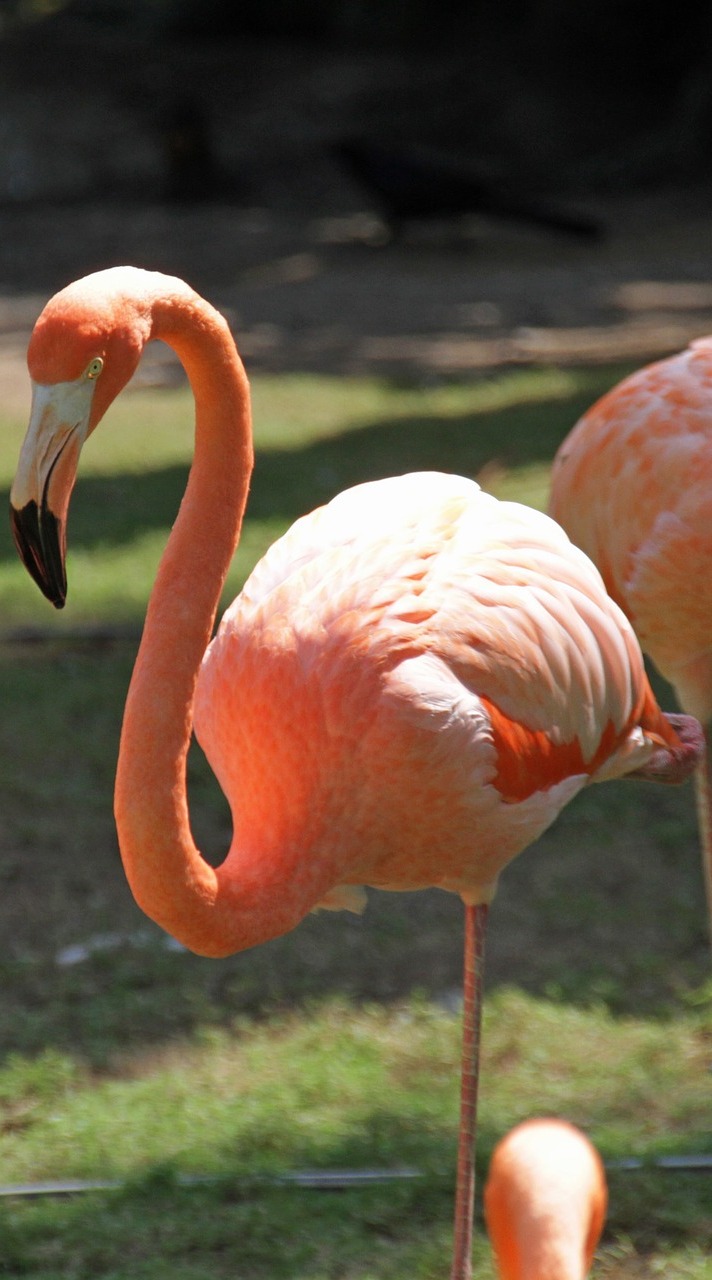

Though the researchers might be one step closer to figuring out how flamingos stand on one leg, the question of why they do so remains a mystery. As the flamingo remains nearly perfectly still while sleeping, gravity does the rest, keeping the bird in place. A new twist on the Flamingo Did you know that the flamingo is the color it is because the algae and other things it eats is loaded with beta carotene which. All the joints essentially snap into place. Meanwhile, pulling the other leg up forces the knee to bend, which the flamingo rests on. Instead, it's centered directly under the carriage of bird. When the flamingo is ready to nod off, it lifts one leg and instinctively moves its body so its single foot isn't under its hip. Its knee, meanwhile, is hidden in the bird's features at the fatter part of its body. The one you can see, that bends backward, is not the knee. As with humans, flamingos have two main joints on their leg.


Because legs are thin and lack insulating feathers, they may account for the majority of heat loss, so it makes sense that birds with long legs that spend a long time in water might need to rely more on one-legged standing to regulate their body temperature.The bird's skeleton appears to be the key. A comparative study of nine wading bird species found that those with relatively longer legs roost on one leg more often.
#Flamingo legs skin#
Some flamingos live in very salty and alkaline lakes that burn the skin of most animals, and while they have tough skin to withstand the caustic water, alternating between legs may help them prevent overexposure.įlamingos are not the only birds to stand on one leg. Most studies report that flamingos spend equal time standing on their right and left legs. However, the same study that discovered they spend more time on one leg in water also found that the birds move more quickly when they start standing on both feet. It has been suggested that standing on one leg reduces muscle fatigue for flamingos, or enables them to move more quickly if they suddenly have to escape a predator. This system enables horses to stay standing with almost no muscular effort, even while asleep. It is unclear how they might do this, but they may have a mechanism similar to the “stay apparatus” in a horse, an arrangement of muscles, tendons and ligaments that lock the joints. Their standing leg inclines so that the foot moves from being directly under their hip to being directly under the center of the body. The researchers also found that live flamingos in a zoo sway less when they stand on one leg. Flamingo legs are built very differently from human legs, however, and when flamingos raise one leg two things happen: Their ankle joint snaps shut to lock the foot-to-leg joint in place.

In 2017, a study of flamingo cadavers found that they can passively support their body weight on one leg without any muscle activity, but they cannot maintain balance holding a two-legged pose. One study discovered that flamingos are significantly more likely to stand on one foot in bodies of water than on land, while another found them to adopt a one-legged stance more often when the weather is colder.Īlthough it sounds counter-intuitive, it may also be that it takes less effort for flamingos to stand on one leg than on two. The most likely explanation for this avian balancing act is that it helps them conserve body heat. While we can confidently explain why flamingos have pink feathers, there are competing theories about another of their distinctive characteristics – why they stand on one leg. With their flamboyant feathers and elaborate mating dances, flamingos are one of the most recognisable animals on the planet.


 0 kommentar(er)
0 kommentar(er)
